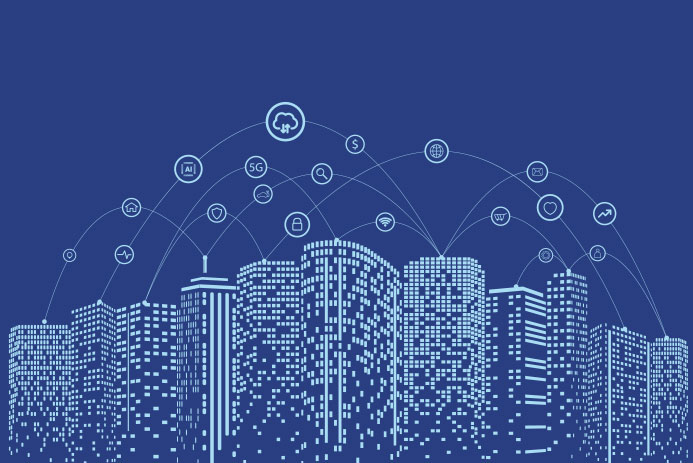Future
Apr 13, 2021
Connectivity is key to enabling digital transformation
Today, business and IT leaders increasingly focus on leveraging digital technologies and innovation to keep their organisations productive, efficient, relevant,…
Future
Published on April 29, 2020

Product design, development, and data analysis are empowered by deep learning, AI and big data analytics. These require high-performing GPUs for scaling and speeding up the process, explains Nitin Jadhav, Head of Solution Engineering – Yotta Infrastructure.
Years ago, a graphic processor unit or GPU used to be a small part of the central processing unit or CPU. It was, as the name suggests used for making our PCs or computers graphic and video enabled.
With advancement, our content evolved into pictures, audio and video. It then follows that the role of GPU would become more critical in the general scheme of things. And it did. GPU was slowly and steadily making its way to becoming from something that was much in demand in the niche markets of gamers and VR/AR to something that had a more mass appeal.
GPUs are the new CPUs
Today we see more and more usage of 3D modelling and animation, leading to high demand for the advance high-performing computing capabilities of GPU solutions. We see animation studios now partnering with companies providing GPU solutions to enhance the quality of their animated feature films.
Also, the rapid adoption of the IoT and Industrial Internet of Things (IIoT) across sectors, for product design, development, and data analysis backed by deep learning, Artificial Intelligence (AI) and Big Data analytics require high-performing GPUs for scaling and speeding up the process.
GPU can speed up machine learning and AI workloads in terms of magnitude, hours and days instead of weeks and months. Today, GPUs that can handle massively parallel processing which reduces the time to complete the task and in turn also reduces the total cost of ownership. For example, companies are using AI-powered by GPU to automate processes like employee approvals, payment processing, and sales discounting.
GPU on the cloud
It is a challenge for most enterprises to set up a GPU infrastructure on-premise. Also, it is tricky to understand and plan the demand for this infrastructure for its optimal usage. This is why GPU-as-a-Service (GPUaaS) came into being and is a no brainer for most businesses. GPUaaS is basically for on-demand, elastic provisioning of GPU infrastructure.
Low-cost implications, support from cloud service providers and on-demand scalability, are some of the key benefits of GPUaaS. The SaaS service model is expected to grow due to the large-scale adoption of cloud-based GPU computing solutions by end-users. The market players in the GPU market are increasingly focusing on delivering SaaS-based solutions to their customers.
GPUaaS – the future of smart working
GPUaaS can be used for tasks as diverse as training multilingual AI speech engines to detecting early signs of diabetes-induced blindness. The speed necessary for machine learning systems like this can only be accomplished with modern GPUaaS that offer a compelling alternative to traditional general-purpose processors with flexible pricing and no CAPEX.
GPU as a Service, can be used with a server model and also as a workstation. If you plan to run computationally intensive tasks, they can consume a lot of CPU power, offloading some of this work to a GPU can free up resources and improve performance output. Similarly, for workstations, the GPU can handle the toughest workloads while the CPU handles regular computing.
With the new technologies becoming more mainstream, GPUaaS will witness an extensive set of applications across industries soon.
GPUaaS – the road ahead
Companies operating in the GPUaaS market are also developing GPU specifically for deep learning and AI. Most product design, development, and data analysis are empowered and backed by deep learning, Artificial Intelligence (AI) and big data analytics these days. These require high-performing GPUs for scaling and speeding up the process.
The market for GPUaaS is already set to exceed US$ 7 billion by 2025; and the Asia-Pacific GPUaaS market is projected to register significant growth with a CAGR of over 40% between 2019 and 2025 according to a research report by Global Market Insights. The region is also a key contributor to the gaming market and is rapidly adopting cloud gaming, resulting in industry growth. Any enterprise looking for a processing activity which relies on highly fast, yet simple calculations are looking at GPUaaS very closely.
Smart cities and energy-efficient buildings will also require high-performing GPUs to run the real-time process seamlessly, along with the deployment of deep learning for predictive analytics. All this and more will lead to the growth of GPUaaS in the future.

Future
Apr 13, 2021
Today, business and IT leaders increasingly focus on leveraging digital technologies and innovation to keep their organisations productive, efficient, relevant,…

Future
Mar 15, 2021
Everything-as-a-Service (XaaS) encompasses Infrastructure-as-a-Service (IaaS), Platform-as-a-Service (PaaS), and Software-as-a-Service (SaaS) The current pandemic has accelerated the pace or adoption of…

Future
Mar 03, 2021
We all are witness to the evolution of the banking industry. Till about 2000, physical bank branches were the visible,…